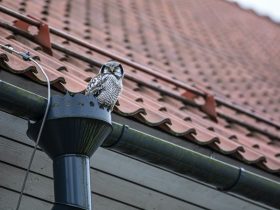In today’s fast-paced world, Energy Efficiency is at the forefront of modern living. Smart homes are transforming the way we manage energy, offering innovative solutions to reduce consumption while enhancing convenience. From smart thermostats to intelligent lighting systems, a smart home can make energy-efficient living a reality, providing both environmental and financial benefits.
What Is a Smart Home?
A smart home integrates various devices and systems, allowing you to control everything from heating and cooling to lighting and security via a smartphone or voice assistant. The goal is to create a seamless and automated environment that adapts to your lifestyle while maximizing energy efficiency. By using technology to manage energy usage intelligently, you can reduce waste and lower utility bills.
Key Components of a Smart Home for Energy Efficiency
Smart Thermostats
One of the easiest ways to achieve energy-efficient living is through a smart thermostat. These devices learn your daily schedule and preferences, adjusting the temperature automatically to optimize energy use. For example, the thermostat can lower the heating or cooling when you’re away, saving energy without compromising comfort. Smart thermostats can reduce energy costs by up to 10%, making them a key component of any energy-efficient home.
Smart Lighting
Smart lighting systems allow you to control the lights in your home remotely or set them on a schedule. Energy-efficient LED bulbs combined with smart controls can dramatically reduce electricity consumption. Features like motion sensors, dimming options, and automated timers ensure that lights are only on when needed. Smart bulbs also last longer than traditional incandescent ones, reducing the need for frequent replacements.
Smart Plugs and Power Strips
Smart plugs and power strips help prevent phantom energy drain, which occurs when appliances continue to use electricity even when turned off. With smart plugs, you can turn off devices remotely or set schedules to cut power when not in use. This is especially useful for high-energy appliances like televisions, computers, or kitchen gadgets.
Energy Monitoring Systems
A smart energy monitoring system tracks your home’s electricity usage in real-time. It provides detailed reports on how much energy each appliance consumes, helping you identify where you can make adjustments. These systems can even send notifications when a device is using more power than expected, giving you greater control over your energy consumption.
Renewable Energy and Smart Homes
Many smart homes are integrating renewable energy sources such as solar panels. A smart home system can optimize the use of solar power by managing energy storage and distribution. For example, excess solar energy can be stored in batteries for use during peak hours, or sold back to the grid for added savings. By combining renewable energy with smart technology, you can create a sustainable and energy-efficient living space.
Benefits of Energy-Efficient Smart Homes
Lower Utility Bills
By automating energy management, a smart home reduces unnecessary power consumption. Over time, the energy savings add up, resulting in significantly lower utility bills. From smart thermostats to energy-efficient appliances, the cumulative impact on your monthly expenses can be substantial.
Increased Convenience
Smart homes allow you to control and monitor energy use from anywhere, providing convenience and peace of mind. Whether you’re adjusting the thermostat while away or ensuring the lights are off, everything is easily managed through a mobile app or voice assistant.
Reduced Carbon Footprint
Reducing energy consumption not only saves money but also decreases your carbon footprint. Energy-efficient smart homes play a crucial role in minimizing greenhouse gas emissions, contributing to a more sustainable environment.
Home Automation Integration
Many energy-efficient smart home devices integrate seamlessly with other home automation systems, creating a fully connected living space. This synergy allows you to optimize every aspect of your home, from entertainment systems to security features, all while keeping energy use in check.
Conclusion
A smart home offers more than just convenience; it provides an effective way to embrace energy-efficient living. By incorporating smart thermostats, lighting, and energy monitoring systems, you can significantly reduce your household’s energy consumption and environmental impact. As technology continues to evolve, smart homes are becoming a key component in creating a sustainable and energy-efficient future.









Leave a Reply
View Comments